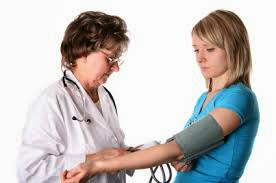What is low blood pressure? treatment advice
What is low blood pressure?
Blood pressure in simple terms, it is the force that the heart requires
that pushes the blood vessels around the body. BP is generated by the force of
the pumping action of the heart and is partly due to the resistance in the
blood vessels to blood flow in the body.
Level people blood pressure is expressed as
two numbers. The top number is called systolic pressure. The lower
number is called the diastolic pressure.
These two numbers are usually written with a slash between
them. For example, you could see the numbers written as 120/80. Another common interpretation
is to be 100/61.
The systolic number is the maximum achieved heart when it
contracts. Diastolic represents the state of relaxation of the heart just
before it starts the next phase of pumping.
For most healthy adults, the higher number is somewhere
between 90 and 120. The decrease - the diastolic blood pressure number -
between 60 and 80.
Current guidelines of normal BP is 120/80. Any higher
than 130 or greater than 80 BP is said to be a little high. BP greater than 160
or greater than 90 reading is certainly high.
If you have high levels of BP then you are at
increased risk of developing heart disease, kidney disease, hardening of the
arteries, stroke or heart attack.
Low blood pressure is another story. It tends not to
cause lasting damage to the blood vessels, but it can sometimes cause low
blood pressure symptoms or signs, because the flow of blood in the arteries
is not sufficient.
The body depends on blood for oxygen in vital organs such as
the brain, heart and kidneys. If blood pressure is too low in these
organs might not have enough blood.
Unlike hypertension, we normally define BP weak in terms of
symptoms and low blood flow is generally not as any one issue in
particular. An example of this is that someone may have the number 90/50 and
feel quite well then someone else will have the same numbers, but being unable
to get up from a chair or bed.












0 comments:
Post a Comment